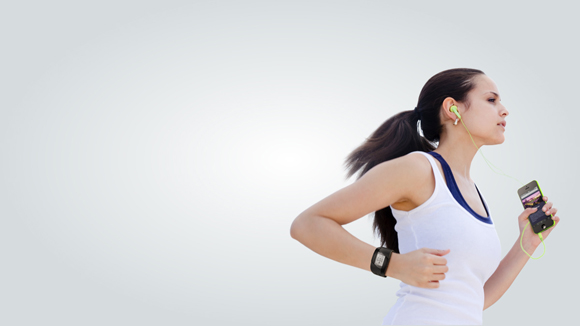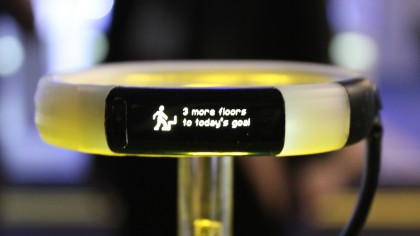The wearable tech that got pulses racing at CES 2014
There's a big future in small devices

Look back at the best gadgetry of CES 2013 and there are clues to the technology trends that will shape the year ahead.
Last year's show embraced gaming, with the promise of console-challenging Steam boxes from Valve, Nvidia's Project Shield, and a Virtual Reality reboot thanks to the amazing Oculus Rift. Last year also alluded to super-smartphones with eight-core mobile processors, while 4K Ultra HD OLED screens rubbished our 1080p HD tellies.
Some tech trends are driven by manufacturers. In its press conference at this year's CES, Samsung boldly declared 2014 to be the year of curved UHD TVs, bendable TVs and tablets. We haven't even adopted 4K and Sharp is already touting an 8K set, while laptops are, inevitably, ever-so-slightly slimmer, lighter and longer-lasting than their predecessors.
Chances are, the biggest technology trend of 2014 will be one of the smallest. So small that you can strap it onto your wrist, pin it to your jacket, see through it, or plug it into your ears.
Wearable technology
It might not look like it, but we stand on the verge of another mobile revolution, the likes of which we haven't seen since Apple launched the iPhone in 2007. Give it a year (maybe two) and wearable technology could be everywhere, in all shapes and sizes, and capable of far more than counting steps or guessing how well you slept last night.
Wearable technology isn't a new idea. You might remember the Casio DataBank - a digital watch with a built-in calculator. Or the Fossil Wrist PDA. You might already own a Nike Fuelband SE, a FitBit Force or a JawBone UP. These fitness/activity trackers are the first stage in a tech trend that has captured the imagination of consumers.
A cluster of new products at CES 2014 give us a glimpse of where wearable technology is heading next and how devices are moving beyond wristbands with limited functionality. The LG Lifeband Touch, for example, has a touch-sensitive OLED display that will track how far you've walked, your steps taken, while keeping a digital eye on your heart rate.
Sign up for breaking news, reviews, opinion, top tech deals, and more.
Yet the Lifeband Touch is more than just a fitness sensor. Like the chunky Samsung Galaxy Gear smartwatch, it can be paired with an Android or iOS smartphone via Bluetooth to show you phone call and message alerts. You can even use it to control your music player remotely.
If the Lifeband Touch is any indication, the next wave of wrist-mounted tech will broaden its functionality beyond calorie-counting and try out new designs. The devices that stand out are those that offer wearable computing with a twist.
Enter the Razer Nabu, a water-resistant wristband that's crammed with sensors to track movement and sleep quality. It can also be paired with a smartphone to show phone, message and email alerts. But it catches our eye thanks to its dual screens, one of which is a discreet notification display, which keeps your data away from prying eyes.

The Garmin Vivofit might find it hard to compete - it's a fitness band first and foremost. But it looks to offer a stiff challenge to the likes of the Jawbone UP and the FitBit Force. That's not to say it's without its appeal. The chunky wearable features a curved, always-on display that shows personalised daily goals, steps, calories burned, distance travelled and, of course, the time.
Sony's new Core product is a better indication of advanced wearables to come, in that the sensor is being designed to fit inside a range of different accessories.
Its first outing at this year's CES might be in a traditional wristband and it is capable of tracking your activity plus alerting you to new texts or phone calls when paired with a phone.